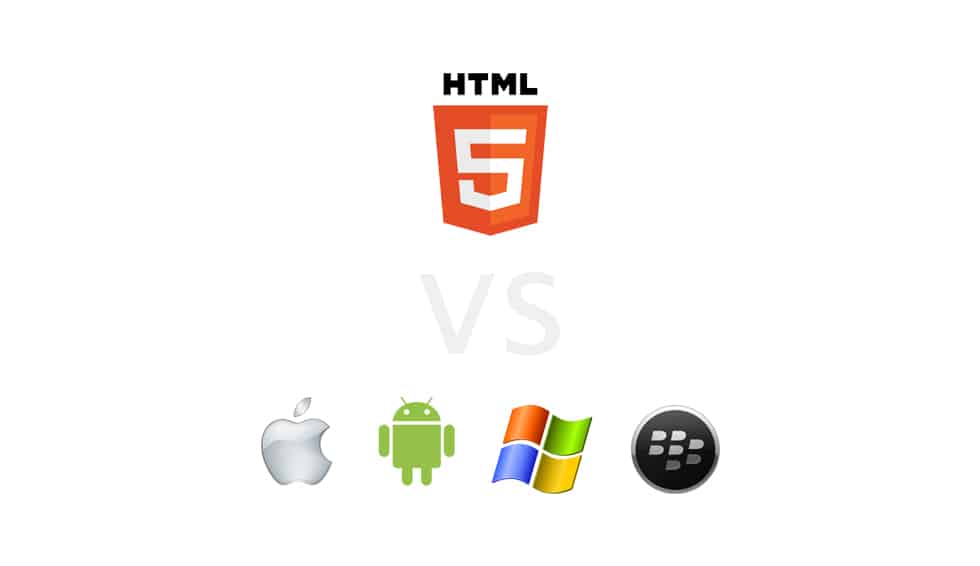
One of the most important steps in planning a mobile application, is choosing between native or hybrid app development. The differences are quite drastic, and can have major cost and business implications, therefore, it’s critical to do your homework upfront and choose the solution that’s best for you business, and your audience.
What is a Native App?
A native mobile application is coded in a language specific to a given platform, such as Objective C for iOS or Java for Android.
Pros:
The overarching benefits of going native include a high level of control over performance and robust tooling options. Since the code base is proprietary to the platform, the features, technology and user experience can be fine-tuned to get the best possible performance from a mobile phone.
Best performance includes things like fluid animations, access to phone hardware, multi-touch gestures and access to the latest APIs.
Cons:
Native programming languages are “niche”, and not understood by every developer. Also, every platform has a proprietary language that can’t be re-purposed to create apps for other platforms. The code must be rewritten, which requires a stand-alone development phase. The project lifecycle of a native application is often long, tedious and expensive.
What is a Hybrid App?
Hybrid applications, or web applications, are essentially web pages displayed in the native browser of a mobile device. Examples are UIWebView for iOS and WebView for Android.
Hybrid apps are coded in HTML, CSS and Javascript, and wrapped in a native application like iOS or Android.
Pros:
Since hybrid apps are like developing standard web pages, they can be rapidly coded and tested in any browser, on any device. Programs like Cordova make this process quite easy.
Since hybrid apps rely on basic front-end markup languages, programming is faster, cheaper and requires less specialized knowledge.
And most importantly, hybrid apps use a single code base that can be quickly repurposed to spit out apps for multiple platforms.
Cons:
The biggest con is hybrid apps are reliant on native browsers, which vary in speed and performance. While this is changing rapidly due to advancements in mobile browsers’ abilities to render code like Javascript, it’s still a major point of concern for many in the development community.
Choosing Between The Two
In the end, your goal should be to develop the best product for your business and your users. In our experience, there are two main drivers in the hybrid vs native decision.
Target Audience:
Your platform(s) of choice should be based on the nature of your business, and who your target user is.
iPhone and Android are by far the most popular phones, and have the most app users, so they are the usual suspects. As reported earlier this year by Statista, Android has over 1,600,00 apps available in the Google Play store, while Apple has 1,500,000 in the App Store.
As for users, according to a study by Forbes, iPhone users tend to be more educated, more affluent and classified as “professional or business people”. Android users prefer hard liquor, make less money and aren’t as “obsessed with digital”. There have been many studies performed to help you decide which platform your target demographic is most likely to use, so perform upfront due diligence well before diving into development.
Budget:
Often, the decision between native vs hybrid simply comes down to cost. If your business could benefit from both iPhone and Android apps, you’ll have to decide if your budget allows for creating two stand-alone native apps, as opposed to opting for a hybrid solution that gives you the same result. The later is more affordable, yet slighty more risky.
With regards to going hybrid to save money, it’s important to consider that it’s common for hybrid apps to require extensive optimization to behave like native apps. Also, maintaining multiple apps requires more time and resources, which should be factored into long-term budgets.
Let`s Get
In Touch
Contact us today for a free consultation
and cost estimate for
your project.
We work with companies in all
industries, big or small.
Give Us a Call: 786-529-6039
Services
©2024 FUZE DIGITAL INC. Ignite Your Brand™ | privacy





